Results 10,891 to 10,900 of 12094
Thread: Anandtech News
-
12-01-20, 09:29 AM #10891
Anandtech: Qualcomm Tech Summit 2020: Day One LiveBlog (10:00 ET, 15:00 UTC)
The annual Qualcomm Tech Summit is upon us, and today is the first day of announcements. Cristiano Amon is expected to go into Qualcomm's successes this year as well as look forward to Qualcomm's upcoming roadmap. Starts soon, so follow with AnandTech!
More...
-
12-01-20, 12:21 PM #10892
Anandtech: TeamGroup Announces Intentions for DDR5, ELITE DDR5-5200 in 2021
Earlier in the year, we learned that a lot of DDR5 manufacturing is already in the pipeline, with Samsung, SK Hynix, and Micron all making announcements this year regarding their respective DDR5 plans. All of this speculation points to a 2021 launch, and to our surprise one of the module manufacurers is leading a charge. TeamGroup today is making an official statement revealing its plans to launch its ELITE series product lines, starting with DDR5-4800 modules and moving up to DDR5-5200.
Since the official specifications of DDR5 have been published by JEDEC, the initial standards include DDR5-3200 all the way to DDR5-6400, with future standards of up to DDR5-8400 expected. However, the full specifications haven't been unveiled. In October, we examined information on sub-timings and latency with DDR5, and we also saw SK Hynix's announcement of its DDR5-4800 memory.
TeamGroup is a module manufacturer, and it has signaled its intentions to manufacture its first DDR5 under its popular ELITE series. The TeamGroup ELITE DDR5 series will first be available in 16 GB DDR5-4800 modules, with an operating voltage of 1.1 V, which is down from 1.2 V compared to the previous generations. TeamGroup states that this is an increase of up to 1.6 times the performance compared to its current memory (4800/3000 = 1.6), reducing 10% in power consumption. However, it doesn't specify whose DDR5 chip it will use, although this is likely to be unveiled at a later date.
As we know from the official DDR5 specifications, each module will include on-die ECC for cell-to-cell data coherence (module-wide ECC is still optional). There are also two channels on each DDR5 memory stick. This is similar to LPDDR4 and GDDR6, with DDR5 opting for two independent 40-bit channels per module. These will still be based on the 288 pin design as DDR4 but will include different pinouts and notches/keying.
It looks as though TeamGroup is in full control of its expected DDR5 launch, which they state is likely to be in Q3 2021. It hasn't provided specific details about its ELITE DDR5 series, but there is a lot of time between now and the third quarter of next year, and we expect to hear much more information sometime within the next few months. The fact that ELITE is a consumer brand suggests that TeamGroup knows we will be seeing a consumer-grade processor around that time with DDR4, but ELITE is also the base bare-PCB variant, which might be focused more to base enterprise models instead.
Related Reading- Insights into DDR5 Sub-timings and Latencies
- DDR5 is Coming: First 64GB DDR5-4800 Modules from SK Hynix
- DDR5 Memory Specification Released: Setting the Stage for DDR5-6400 And Beyond
- SK Hynix: We're Planning for DDR5-8400 at 1.1 Volts
- Cadence DDR5 UpdateL Launching at 4800 MT/s, Over 12 DDR5 SoCs in Development
More...
-
12-02-20, 11:43 AM #10893
Anandtech: Qualcomm Details The Snapdragon 888: 3rd Gen 5G & Cortex-X1 on 5nm
This year although we’re not reporting from Hawaii, Qualcomm’s Tech Summit is still happening in digital form, representing the company’s most important launch event of the year as it showcases the new flagship products that will power next year’s smartphones. Qualcomm yesterday announced the new Snapdragon 888 SoC and platform, and today we’re going in-depth into the specifications and features of the new silicon design.
The Snapdragon 888 is a big leap for Qualcomm, so much so that they’ve veered off from their usual naming scheme increments this generation and even skipped the 87x series altogether. The 888 number is not there only for marketing purposes as it represents fortune and luck in Chinese, but the new SoC has some substantial generational changes that sets it apart from the usual yearly improvements of past.
Featuring the first ever implementation of a Cortex-X1 CPU core as its performance engine, new Cortex-A78 cores for efficiency, a massive +35% boost in GPU performance, a totally new DSP/NPU IP redesigned from the ground up, triple camera ISPs, integrated 5G modem, all manufactured on a new 5nm process node, the new Snapdragon 888 touches and updates almost every part of the SoC design with significant uplifts in performance and capabilities.
More...
-
12-02-20, 02:58 PM #10894
Anandtech: Qualcomm Tech Summit 2020: Interview with Alex Katouzian
Within today’s Qualcomm Tech Summit 2020, we’ve seen the announcement of the new Snapdragon 888 which we’ve detailed extensively in our dedicated coverage article.
As part of the show, we’ve had the opportunity to interview Alex Katouzian, Qualcomm’s SVP and GM of the mobile, compute and infrastructure business – including Handsets, XR, Compute, Edge/AI Cloud, 5G/4G businesses.
Similar to last year’s interview, we were able to talk to Alex about this year’s new announcements, the 5G ecosystem, and the new technologies which enable these new generation products.
More...
-
12-03-20, 10:37 AM #10895
Anandtech: Investigating Performance of Multi-Threading on Zen 3 and AMD Ryzen 5000
One of the stories around AMD’s initial generations of Zen processors was the effect of Simultaneous Multi-Threading (SMT) on performance. By running with this mode enabled, as is default in most situations, users saw significant performance rises in situations that could take advantage. The reasons for this performance increase rely on two competing factors: first, why is the core designed to be so underutilized by one thread, or second, the construction of an efficient SMT strategy in order to increase performance. In this review, we take a look at AMD’s latest Zen 3 architecture to observe the benefits of SMT.
More...
-
12-03-20, 09:11 PM #10896
Anandtech: Razer's First Modular PC, The Tomahawk: A Fully Custom NUC 9 Extreme
Razer, a company that styles itself as 'by gamers, for gamers', has today unveiled its latest product, a modular NUC dubbed the Tomahawk. Available as both a barebones package and a high-tier gaming solution, the Razer Tomahawk looks to offer a 'cutting edge' mixture of functionality, performance, and graphics card compatibility, all within a NUC inspired chassis. Some of the key specifications include an Intel 9th generation Core i9 processor, with a 512 GB PCIe 3.0 x4 SSD, 2 TB of HDD storage, 16 GB of DDR4-2667 memory, and an optional RTX 3080.
The term NUC (Next Unit of Computing) gets thrown around a lot when it comes to super small form factor desktop computers, even when NUC is technically an Intel term. Going all the way back to 2014, when Razer's CEO unveiled a conceptual design for a modular PC dubbed 'Project Christine,' Intel looked to have taken the idea a step forward with what it called Element. We've seen many Intel NUCs hit the market this year, including the NUC 9 Extreme (NUC9i9QNX), which we reviewed back in April. Razer being Razer has gone one step further on this idea and created its own version of the NUC, with the Razer Tomahawk.
What sets the Razer Tomahawk apart from other NUCs on the market is its full-scale capability to install a full-sized graphics card with a maximum length of up to 320 mm, with a maximum height of 140 mm. This moves away from common small form factor systems, which generally have to opt for smaller alternatives such as the NVIDIA GTX 1650. The Razer Tomahawk features a tool-less sled that allows users access to the system, which could be to upgrade the storage or even install a new graphics card.
While this is a 'modular' system, it is essentially a PCIe backplane with two PCIe slots. In one slot goes the graphics card, and in the other is 'the rest of the PC'. That rest of the PC includes a 45 W overclockable mobile processor (unupgradable), memory (upgradeable), and storage (upgradeable). Despite there being a barebones option, Razer pre-populates all models with a 512 GB NVMe SSD, a 2 TB HDD, and 16 GB of DDR4-2667 (Razer doesn't say if this is 1x16 or 2x8). On both models there is a spare M.2 NVMe slot, and the barebones simply lacks the discrete GPU, but the integrated GPU can be used if there is not a discrete GPU present.
It wouldn't be a Razer product if it didn't have RGB LEDs. It includes an illuminated green Razer logo on the front panel, with addressable RGB LEDs on the underneath of the chassis to provide a bit of flair. Focusing on the size, the Tomahawk chassis is 19.23 x 24.15 x 1.60 inches (HxWxD), so it is svelte, and it also weighs in at 16.2 lbs. In terms of volume, the chassis itself is 10 L, which is big enough to fit all of the components in when designed efficiently.
Given the nature of the hardware installed, Razer has opted to cool the processor actively and includes two top-mounted 120 mm chassis fans, with ventilation on both side panels and the top panel. Powering the Tomahawk is a preinstalled 750W SFX power supply, although Razer hasn't specified the exact model.Razer Tomahawk Gaming NUC Desktop Component Barebones Full System CPU Intel Core i9-9980HK (Coffee Lake)
8 Core / 16 Thread
2.4 GHz Base
5.0 GHz Turbo
45 W TDPGPU Optional
(Intel UHD 630 if none)NVIDIA RTX 3080 Founders Edition
1.71 GHz Boost
10 GB GDDR6XMemory 16 GB DDR4-2667 Storage 512 GB NVMe PCIe 3.0 x4
2 TB 5400 RPM Hard Drive
1 x M.2 PCIe 3.0 x4 (open)Networking 2 x Gigabit LAN Wireless Intel AX200 (Wi-Fi 6/BT 5.0) I/O 2 x USB 3.2 G2 Type-C (Thunderbolt 3)
4 x USB 3.2 G2 Type-A
1 x 3.5 mm audio jack
2 x Gigabit RJ45
1 x HDMI 2.0aAudio 3.5 mm TOSLINK combo port Power 750 W SFX Power Supply Dimensions 19.23 x 24.15 x 1.60 inches (HxWxD) Weight 16.2 lb/7.35 kg 18.3 lb/8.3 kg Pricing $2400 $3200 Availability ???
In terms of connectivity, the Tomahawk includes four USB 3.2 G2 Type-A ports, with two Thunderbolt 3 USB Type-C ports, and a single HDMI 2.0a video output. Users opting for the full package, including an NVIDIA RTX 3080 Founders Edition graphics card, adds three DisplayPort 1.4b and a single HDMI 2.1 video output. Networking includes two Gigabit Ethernet ports driven by unspecified controllers, while there's also an Intel AX200 Wi-Fi 6 interface, which includes support for BT 5.0 devices. Nestled in between the motherboard and graphics, I/O is a single 3.5mm audio jack that can accommodate speakers or act as a TOSLINK combo port.
A few possible use case scenarios for those with bottomless pockets or shallow desks could find this an ideal system to take to LAN, to and from work, or even for an on the go content creator. While Razer did unveil its own chassis called the Tomahawk Elite back at CES 2019, the Tomahawk Gaming System is a higher-grade and RGB infused version of Intel's NUC 9 Extreme.
As previously mentioned, the Razer Tomahawk gaming desktop will be available as barebones without a graphics card for a base price of $2400, while the full model equipped with an RTX 3080 Founders Edition will cost $3200. It's not a cheap outlay, especially for an Intel system featuring an RTX 3080, but the latter hasn't been easy to source of late.
Gallery: Razer Gaming NUC - To Edit Title_thumb.jpg)
_575px_thumb.jpg)
_thumb.jpg)
_575px_thumb.jpg)
_thumb.jpg)
_575px_thumb.jpg)
Related Reading- ASRock Brings Zen 2 NUC: 4X4 BOX-4800U Renoir Mini-PC Reviewed
- Intel Ghost Canyon NUC9i9QNX Review: NUC 9 Extreme Realizes the SFF Dream
- Kontron Releases KBox B-202 CFL Mini-ITX PC: SFF Desktop For Commercial Use
- CES 2020: ZOTAC's Inspire Studio SFF PCs for Creators w / 8-Core CPU and GeForce RTX
- Razer's Project Christine: A Modular PC Prototype
More...
-
12-04-20, 07:39 AM #10897
Anandtech: QLC Goes To 8TB: Samsung 870 QVO and Sabrent Rocket Q 8TB SSDs Reviewed
Flash memory prices have been on a downward trajectory for years. A decade ago, this trend was helping SSDs establish a foothold in the consumer market—largely for enthusiasts. Now, SSDs have taken over as the default storage medium for consumer PCs and further advances in flash memory are no longer pushing consumer SSDs into new product segments. Instead, cheaper flash is driving an increase in SSD capacity.
That growth in drive capacity has not been steady. For both technical and marketing reasons, consumer SSD capacities stick close to powers of two. The first 2TB consumer SSDs started to show up in 2015, and now 2TB options are common across all the SSD market segments. 4TB drives started to show up in 2018 but are still quite rare, and this year we've seen the first 8TB consumer SSDs.
Today we're looking at the first two consumer-oriented 8TB SSDs. The 8TB Samsung 870 QVO is a SATA drive from the brand that has been at the forefront of the past several capacity increases and leads the SSD market by most other measures. The other drive is the 8TB Sabrent Rocket Q, a M.2 NVMe drive from a brand that's working to stand out from the crowd of many other Phison partners. Unsurprisingly, both of these drives use four bit per cell QLC NAND flash memory which offers the lowest cost per GB and the highest per-die capacities currently available. QLC NAND generally puts SSDs into an entry-level market segment, but due to their extreme capacities these 8TB SSDs are still some of the most expensive drives in the consumer SSD market.
More...
-
12-07-20, 07:25 AM #10898
Anandtech: SK Hynix Announces 176-Layer 3D NAND
SK hynix has announced their latest generation of 3D NAND, now featuring 176 layers of charge trap flash memory cells. SK hynix is the second NAND manufacturer to reach this layer count, following Micron's announcement that their 176L NAND was starting to ship in Crucial-branded products.
This is SK hynix's third generation to feature their Periphery under Cell (PUC) design to reduce die size by placing peripheral logic under the memory cell array, similar to Intel and Micron's CMOS Under Array design. (SK hynix refers to the combination of this die layout and their charge trap flash cells as "4D NAND".) Changes with this generation include a 35% increase in bit productivity (only slightly less than theoretically possible with the jump from 128 to 176 layers) and a 20% increase in cell read speed. The maximum IO speed between NAND dies and the SSD controller has been increased from 1.2GT/s for their 128L NAND to 1.6GT/s for the 176L NAND.
SK hynix has started sampling a 512Gbit TLC part to SSD controller companies for developing compatible firmware. SK hynix plans to initially use their 176L NAND for mobile products (ie. UFS modules) which will offer 70% faster read speeds and 35% faster write speeds, due to be introduced around the middle of next year. The mobile products will then be followed up by consumer and enterprise SSDs. SK hynix also plans to introduce 1Tbit dies based on their 176L process.
Based on this announcement, it appears that SK hynix will be fairly competitive during the upcoming generation of 3D NAND. They may be running a bit behind Micron's schedule, but Micron has been pursuing an unusually quick transition to 176L after using their 128L generation as a low-volume test vehicle to work out any issues resulting from their switch from floating gate to charge trap cell design. Meanwhile, Intel's 144L NAND should be arriving early next year, and Kioxia/Western Digital 112L NAND is due to show up any day now. Samsung's 128L NAND started shipping a few months ago in the 980 PRO. Wile they have not officially announced specs for their next generation, it is expected to go into production next spring with a layer count in the neighborhood of 176L, and to be Samsung's first generation to use string stacking—a technique their competitors all had to adopt while layer counts were in the 64-96L range.
Related Reading:
- Micron Announces 176-layer 3D NAND
- SK Hynix to Buy Intel’s NAND Memory Business For $9 Billion
- The Best NVMe SSD for Laptops and Notebooks: SK hynix Gold P31 1TB SSD Reviewed
- Western Digital and Kioxia Announce BiCS5 112-Layer 3D NAND
More...
-
12-07-20, 09:25 AM #10899
Anandtech: The GIGABYTE B550I Aorus Pro AX Motherboard Review: All The Small Things
Sometimes less is more, and when it comes to motherboards the mini-ITX form factor has some of the most enthusiastic fan club members. Small form factor systems are becoming more widely used as we're ushered into a single graphics card setup dominated landscape. and in terms of features to price, the B550 chipset has some of the most cost-effective of any current desktop platform. One such board is the GIGABYTE B550I Aorus Pro AX which combines a wave of premium features combined with AMD's B550 chipset. It includes compatibility for PCIe 4.0 devices with supported processors, dual PCIe M.2 slots, and 2.5 gigabit Ethernet. It's time to give our verdict on it and see if it can cut it in a very competitive small is more market.
More...
-
12-08-20, 04:50 AM #10900
Anandtech: Mushkin Announces 8TB M.2 SSD: ALPHA Series
Anyone in the market for high capacity 8 TB M.2 drives has so far only had one choice on the market. Today Mushkin is coming in as the second vendor to offer an 8TB M.2 NVMe option, with its new ALPHA series of drives. These drives use the same Phison E12S controller and high capacity NAND as those also available on the market, but Mushkin rates its drives slightly differently to the competition.
One of the ways the storage market has amazed me in the last few years is capacity. While physical rotating spinning rust is at 16 TB or 18 TB and perhaps approaching 24 TB next year, we’ve seen storage drives in similar form factors reach 64 TB and 100 TB without too much trouble. The enterprise is where we see some of those crazy SSD capacities using TLC and QLC, hence the existence of NimbusData and competitors, but the nous that goes into these products trickles down into the prosumer space, where there is demand but at a more palatable cost/GB ratio.
The question is always one of control and cost, and NAND is still more expensive than rotating iron oxides. Consumer grade NVMe SSDs are hovering around the $100/TB mark, depending on the brand, performance, and if it’s in a sale, making high-speed storage a very attractive offer. For the high-capacity prosumer NVMe options, we’ve historically seen this come down as well, from $1000/TB to $500/TB, and now with these new 8 TB drives, we are solidly looking at below the $200/TB mark. This new Mushkin Alpha 8 TB is going to be available for $1300, which puts it at $162.50 per TB.
Here Mushkin is pairing the Phison E12 controller with QLC NAND, and the PCIe 3.0 x4 interface should allow maximum sequential speeds of 3300 MB/s read and 2800 MB/s write, or up to 550K IOPs read and 680K IOPs write. The fact that this is all within the standard M.2 2280 form factor to me is still amazing, whether it’s from Mushkin or anyone else.
The drive has a 3 year limited warranty, and is rated to 900 TB written, which equates to 0.1 drive writes per day, or 800 GB of writes per day in that timeframe. For those working with 4K video, this is probably not enough, but for business users that need a high capacity drive for their laptop or mobile workstation, it should fit the bill. Mushkin rates the drive at 0.3 W at idle and 6.5 W max. It is worth noting that the 900 TB rating is half of what Sabrent rates its 8TB drive for. This rating is only for the warranty period cover - the drive will still work after these numbers, but it just won't be replaced by the manufacturer.Mushkin ALPHA Series AnandTech 4TB 8TB Form Factor M.2 2280 Double Sided PCIe 3.0 x4 Controller Phison E12S NAND Flash Micron 1TB 96L 3D QLC ? Sequential Read/Write (MB/s) 3200 / 3000 3300 / 2800 Random 4K IOPs Read/Write (MB/s) 550K / 640K 550K / 680K Power Consumpton Idle/Max (W) 0.3 / 6.5 0.3 / 6.5 Warranty 3-year Limited Warranty Write Endurance 900 TB
0.2 DWPD900 TB
0.1 DWPDRetail Price $650
16.3¢ per GB$1300
16.3¢ per GB
The 8 TB drive (and 4 TB variant) will go on sale near the end of January in the US, but the listings are already up on Amazon, with stock expected on January 23rd.
Source: Mushkin
Related Reading- Unlimited 5 Year Endurance: The 100TB SSD from Nimbus Data
- Nimbus Data’s New ExaDrive NL: 64 TB of Enterprise Grade QLC in 3.5-inch
- Mushkin’s Helix-L SSDs Available: Pushing the Price of 3D TLC
- Mushkin at CES 2019: SSDs With 96L 3D NAND in Q2
- QLC Goes To 8TB: Samsung 870 QVO and Sabrent Rocket Q 8TB SSDs Reviewed
More...
Thread Information
Users Browsing this Thread
There are currently 11 users browsing this thread. (0 members and 11 guests)





 Quote
Quote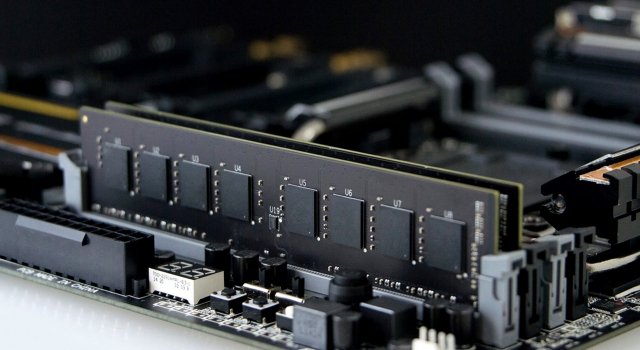
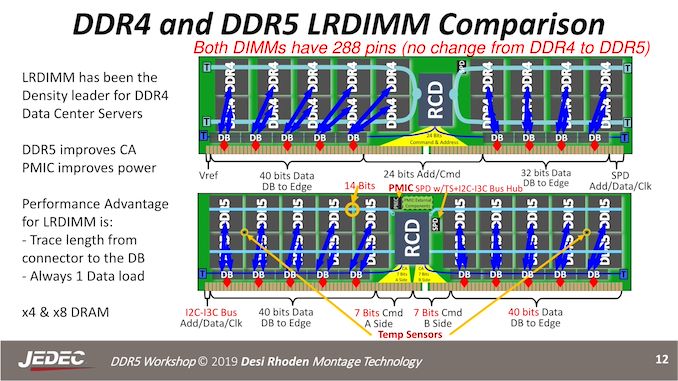
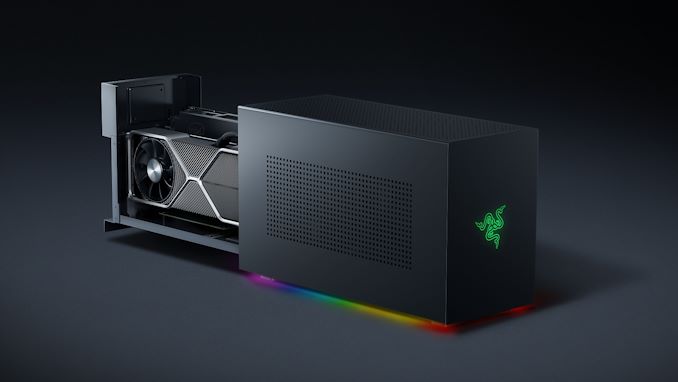
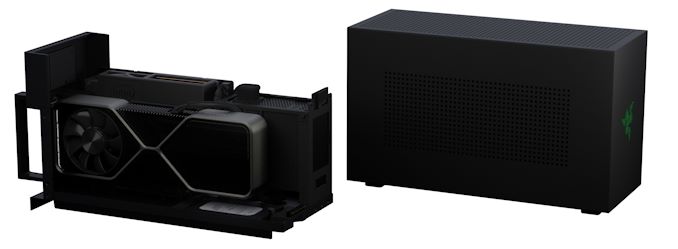
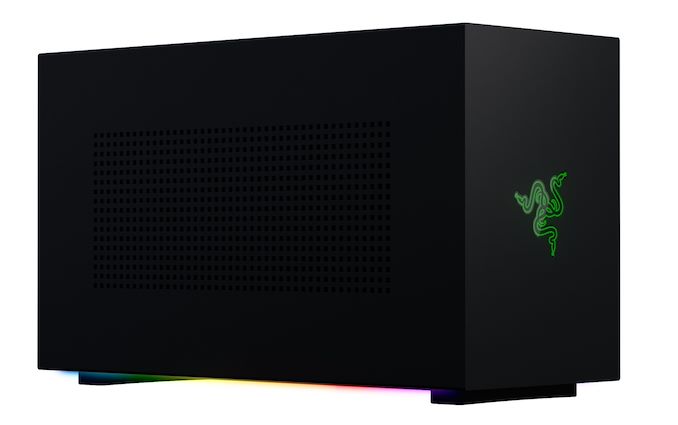
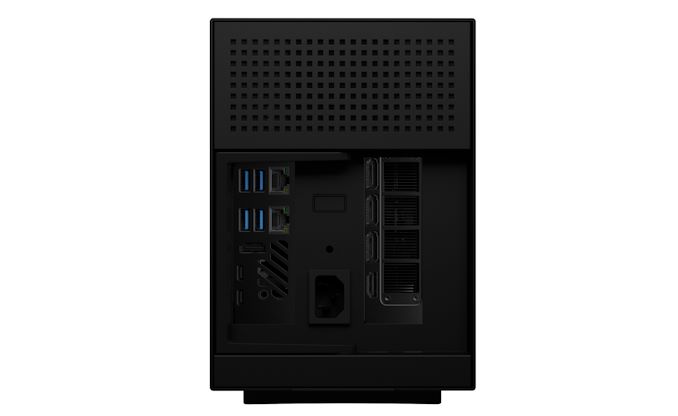

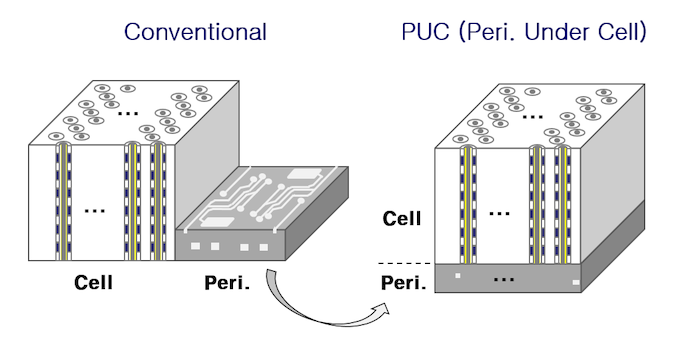
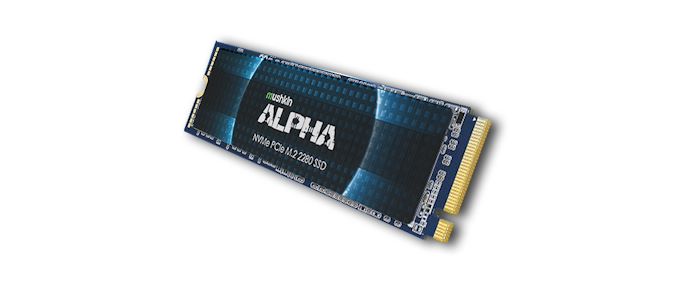

















Bookmarks